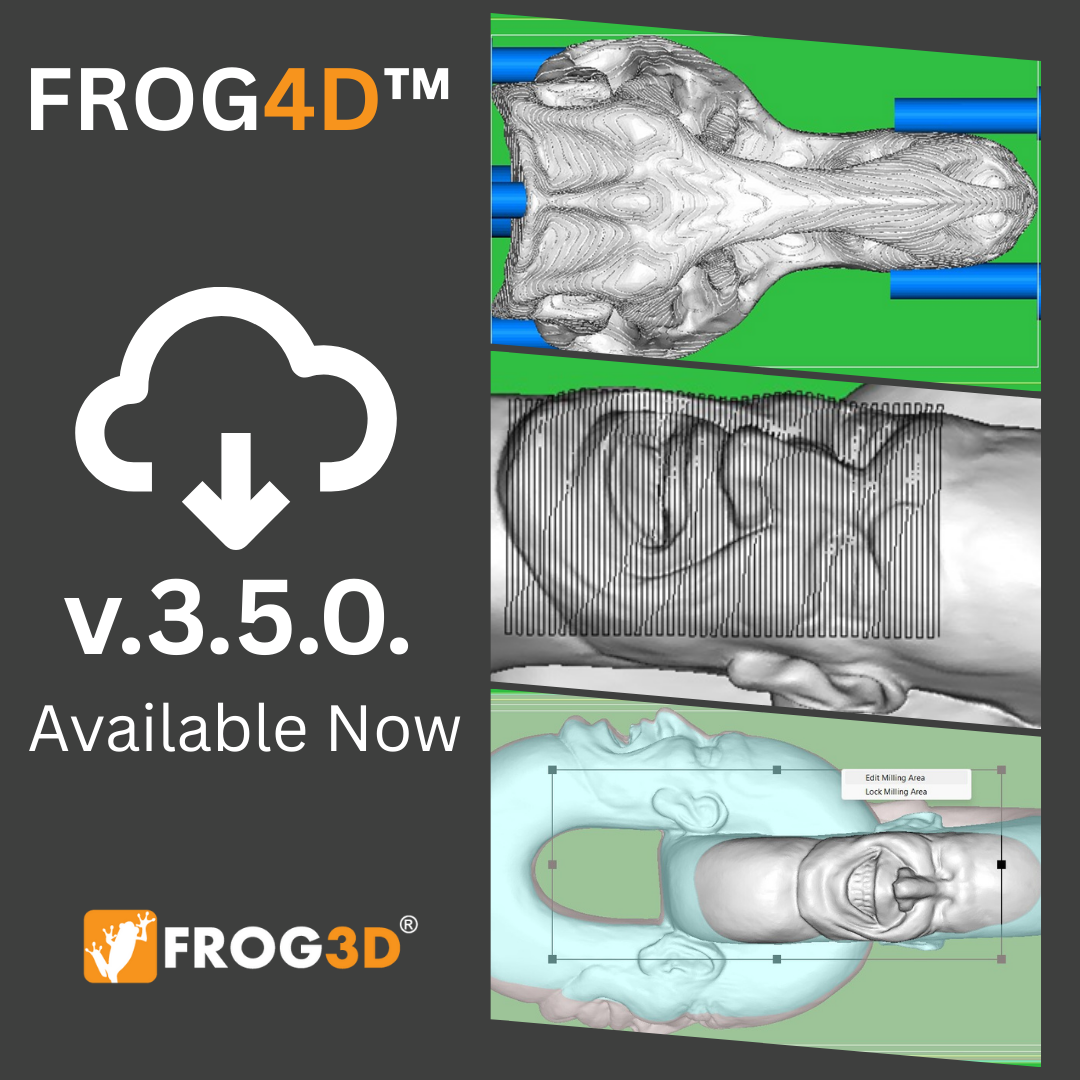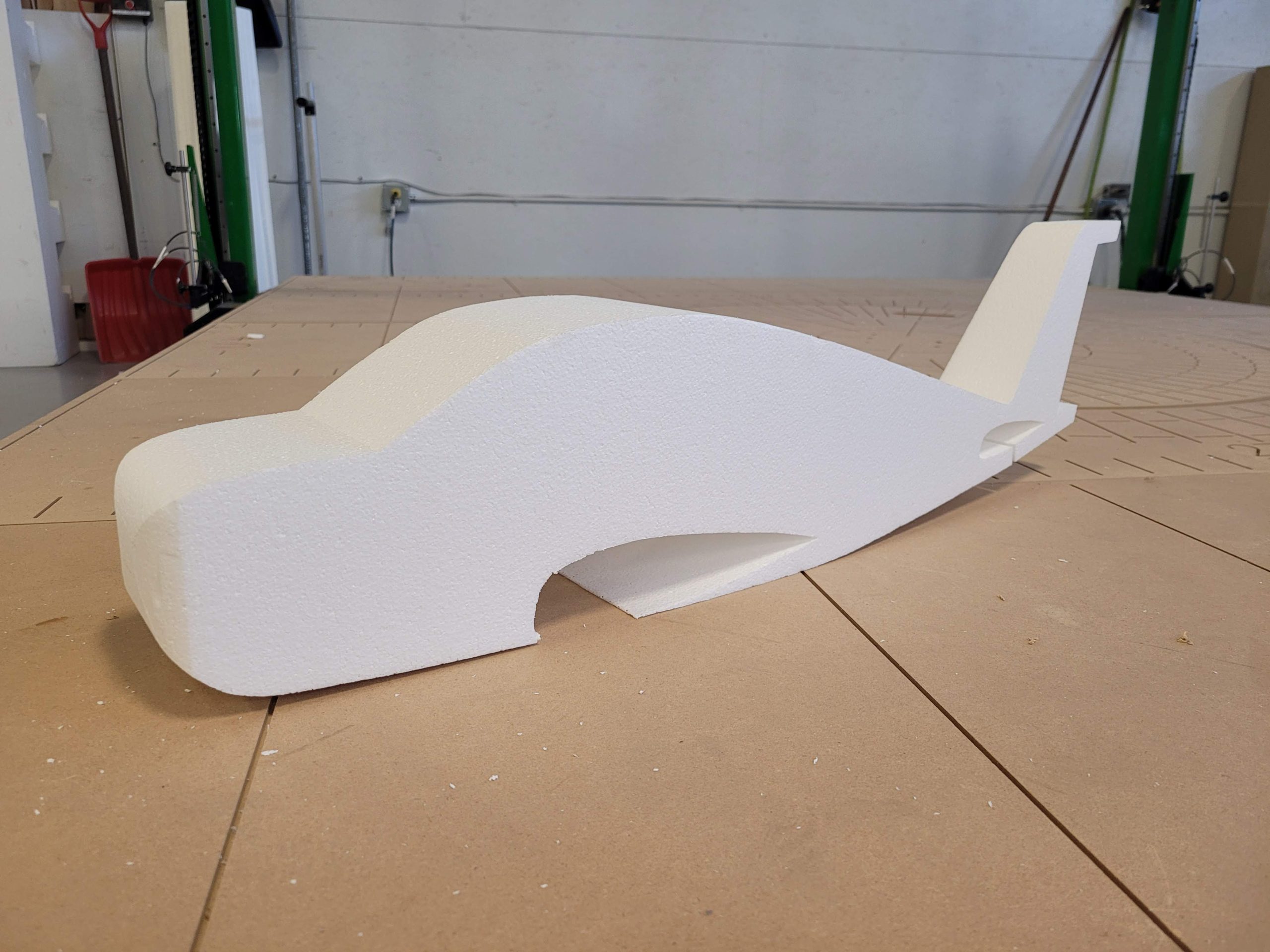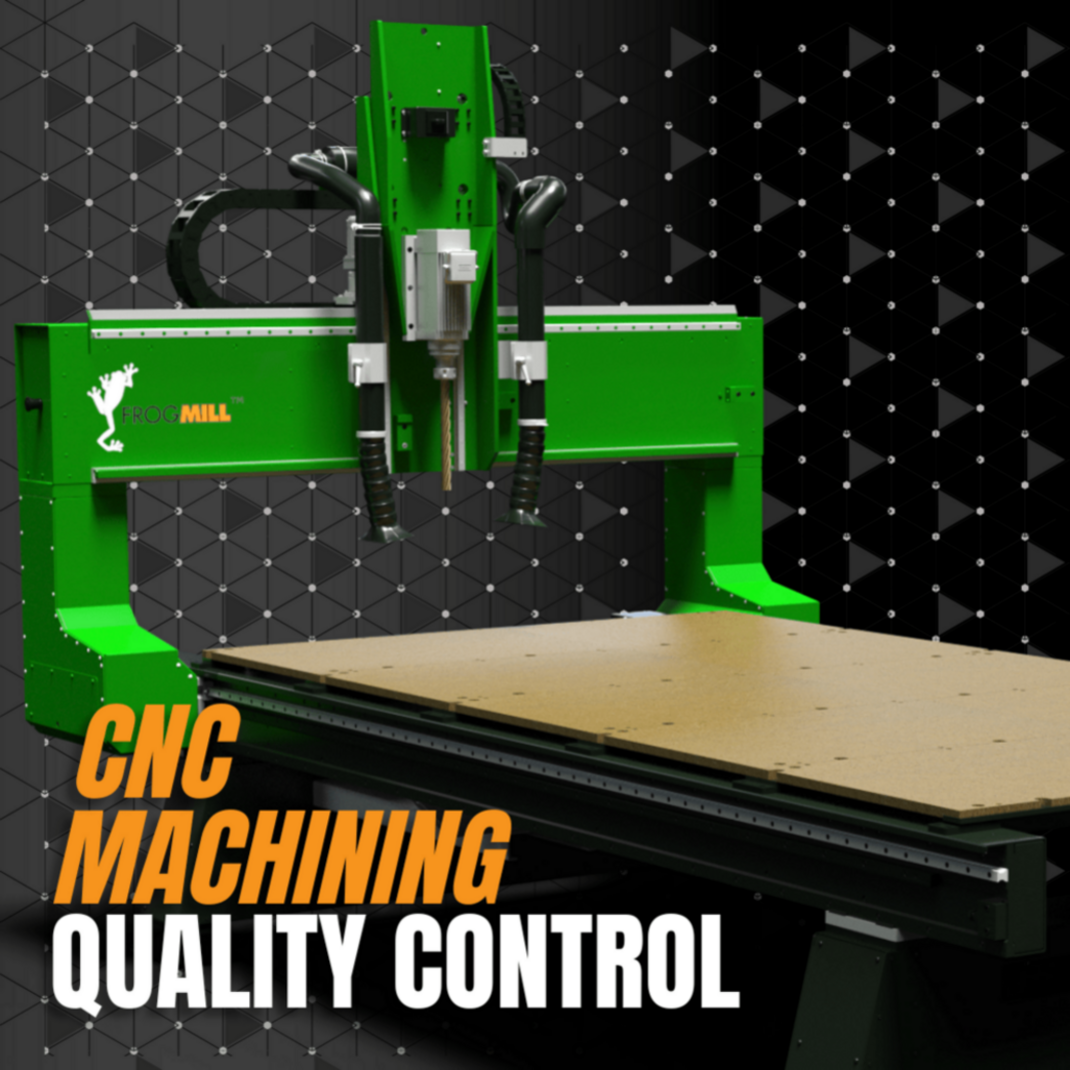Computer Numerical Control (CNC) machining is a flexible and high-precision manufacturing process that is useful for the production of complex and accurate parts and products. Pre-programmed software controls the movement of tools and machinery to create a desired final product by using grinders, lathes, mills, and CNC routers. CNC machining removes material from a solid block to accomplish three-dimensional cutting tasks in a single set of prompts, and this process allows manufacturers to quickly produce prototypes and durable parts for different applications. In a nutshell, the advantages of fully automated CNC machining are: improved precision, accuracy, efficiency, speed, and the elimination of manual errors.
That being said, material selection is a vital aspect of any manufacturing process, and manufacturers must be especially diligent when selecting materials for CNC machining. The CNC machining process is compatible with many materials such as plastics, fibreglass, wood, and others. The following article outlines the variation in materials available for CNC machining and the choices that some recent advancements in materials can offer for your intended purposes.
Common CNC Machining Materials
Any material that is firm enough for machining can be utilized for CNC manufacturing and this gives machinists many choices to select from. The following are some of the most common materials used in CNC manufacturing:
Acrylic
Acrylic is chemically known as plexiglass, and this material has superb optical clarity, strength, and rigidity. Due to its high transparency, manufacturers utilize it commonly as a glass replacement. CNC machining acrylic allows for the production of acrylic parts with highly precise shapes and sizes and by using optimal force through the cutting process, CNC machining helps prevent significant damage to acrylic material while accelerating the process. Acrylic is a thermoplastic that is ideal for creating products like headlights, taillights, LCD screens, medical devices, and furniture.
Wood
Wood is a commonly used material for CNC machining because it is easy to machine, has strength and hardness, and there is a wide range of types of wood available. It is a popular choice for furniture, home decor, and DIY projects but wood machining creates a large amount of dust which can pose health risks to its workers which is why it is important for workshops to have a proper dust collection set-up in place.
Using Alternative Materials In CNC Machining
Traditionally, CNC machining has been implemented to work with metals such as aluminum, steel, and brass. However, in recent years, there has been an increasing trend toward the utilization of alternative materials in CNC machining. This includes the use of composites, foam, plastics, and other different materials. A reason for this trend is due to the growing demand for lightweight and high-strength materials in the aerospace and automotive industries, for example.
One more reason for the trend toward alternative materials is the growing demand for customized and personalized products. The implementation of 3D printing and foam machining in addition to other manufacturing techniques has made it possible to create customized products and several companies are now using CNC machining to refine and complete these products. There are many materials such as resins, ceramics, and others that can be challenging to work with when using traditional machining techniques. As a result, they require specialized tools and techniques to efficiently process the materials. For example, some materials can be more prone to warping and they may require special clamping or fixturing to secure them in place during the machining process. This is why several companies are investing in CNC machining technologies that are specially designed to work with these materials. Machinists implement CNC machining tools made from a variety of different materials that are meant to handle the forces and heat produced by machining processes. In order to remove chips from a workpiece, the cutting tool has to be harder than the workpiece material and should be able to maintain a sharp cutting edge in high-friction and high-temperature conditions. Since manufacturing materials have evolved over time and become more advanced with special properties, tool materials have also evolved and advanced with them.
Recent Advancements in Materials: Printing Materials, Foam, And Composites
CNC machining has become an important aspect for the majority of disciplines that require specialized parts manufactured for their projects. CNC materials have expanded to fulfill the demands of construction applications, architectural design, exhibitionists, production and scenic design, engineering, and other fields to bring solutions for particular applications. Choosing the right materials for your project will make all the difference between mediocre outcomes and exceptional results. The following are some new and improved materials that are being used in CNC machining nowadays instead of traditional machining materials.
Printing Materials
The materials that are utilized in 3D printing are as diverse as the products that are produced in the process. 3D printing is flexible enough to let manufacturers choose the shape, texture, and strength of a product by controlling the selection of filaments and percentage of infill for durability. These qualities can be accomplished with fewer steps than what is usually required in traditional means of production. These products can be made with many types of 3D printing materials such as the following:
Plastic: Plastic is the most common out of all the raw materials for 3D printing used today. It is a diverse material and products that are made with this material include desk utensils, vases, action figures, and so much more. There are many colours available and plastic filaments are sold on spools and can have a matte or shiny texture.
Metal: Metal is often used as a 3D printing material in manufacturing applications and includes gold, titanium, and stainless steel among many other metals.
Graphite: Graphite conducts heat well and is superb for 3D printing and especially for devices that necessitate flexibility since it is one of the most flexible 3D printer materials and is very lightweight. It is a commonly used material in high-heat and high-pressure situations such as in the aerospace industry, electrode, nuclear, and military industries.
Ceramics: Ceramics is one of the newer materials that is implemented in 3D printing. It is more durable than metal and plastic because it can withstand extreme heat and pressure without even breaking or warping. However, it is important to consider that not all printers can handle all materials, and the printing temperatures should be investigated before deciding on a material or printer.
Foam
There is a great demand for this material in the manufacturing industry, particularly for fabrication and machining. The demand for foam cutting and machining is growing in many kinds of applications including props, scenic design, sculptures, signage, monuments, displays, prototypes, architectural displays, construction, packaging, insulation, and a lot more. The 2 types of foam that are commonly used in CNC machining are Polyurethane and Expanded Polystyrene (EPS) foam. EPS foam is a cheaper alternative to metal and wood, and it is much easier to source. Due to its characteristics, EPS foam allows one to keep a competitive edge in the market and take on larger and more complex projects that would normally follow with a costlier overhead. EPS foam is 98% air, has superb cushioning properties, low moisture absorption, is 100% recyclable, and is easy to shape and bend. When used in 3D projects, EPS can be utilized for marking sculptures, molds, theatre props, themed environments, exhibits, architectural figures, and so much more!
FROGWire™ And FROGTools™: Machine Foam With Streamline Automation’s FROG3D® System
The FROGWire™ is Streamline Automation’s advanced hot wire foam cutter, which allows you to prepare foam for detailed milling and sculpting, or create stunning end products. The FROGWire™ offers an easy-to-use control system to monitor and guide the hot wire-cutting process. The FROGWire™ can also be set up with two wires and this allows for immediate double throughput and has multi-axis capabilities and a rotational axis. This multidimensional design increases the complex structures available for cutting and forming and allows the FROG3D® system to maximize accuracy and minimize operation time and cost while doing so.
FROGTools™ are the only CNC tools that will allow you to achieve depth and precision for foam carving applications and these tools are specifically engineered for milling EPS and polyurethane foam and include regular and tapered cutters in ball end and end mill styles. Each standard FROGTool™ is titanium nitrate (TIN) coated to deliver the best in performance and durability and is designed to last and save you the cost of recurring replacements that are typical of lesser tools. In addition, all standard sizes for common milling processes are kept in stock and are available to ship immediately.
The FROGMill™ is Streamline Automation’s FROG3D® CNC router for milling materials such as foam in conjunction with FROGTools™. It isthe most powerful 4-axis CNC router available, and the the 4th axis rotational capabilities lets you go from ‘art to part’ in the shortest amount of time possible while providing the accuracy and detail you need to create stunningly detailed projects. The FROGMill™ is engineered to handle a maximum of 1,000 lbs for the milling of heavy materials such as wood, and maintains accurate tolerances to ensure maximum resolution and accuracy. The FROGMill™ 4-axis CNC router is engineered to work with all other FROG3D® components thus eliminating the hassles that follow non-integrated components.
Composites
Composites are materials that are made from a combination of two or more materials with different properties. Combining materials with unique physical and chemical properties produces a new material with distinct features, and it may also contain other additives and fillers to customize the necessary properties to achieve a better surface finish. Composites are commonly used in the automotive, aviation, sports, and medical industries. There are four common types of composites that are used frequently in CNC machining: Wood composites, reinforced plastics, metal composites, and ceramic composites.
Composites offer corrosion resistance, durability, customized surface, a high strength-to-weight ratio, are non-magnetic, and are easy to maintain. They are strong materials, and an example of this is carbon fibre which is four times stronger than mild steel! Composites are also fire-resistant and the additives in composites such as antimony trioxide create carbon dioxide when a fire starts and then stop it from burning. In addition, the blend of different materials allows composites to be very shock-resistant and can withstand strong impacts on the material without breaking it. Composite materials also offer strong chemical resistance as it relies on the resin used in the production process and this material is commonly used in making pipelines, funnels, ducts, and automobile bodywork.
FROGTools™ Sheet Goods: Machine Composites With Ease With FROG3D® Tools
At Streamline Automation, we offer specialized CNC router bits for foam and alternative materials like wood and plastics such as polypropylene. Since unique materials require specialized tooling approaches for maximum results, the correct CNC machine tools are essential to increase manufacturing productivity, allow extreme precision and accuracy, ensure flexible production, and make sure products are consistent each time.
Our collection of tools in the FROGTools™ Sheet Goods set covers almost all possible needs. FROGTools™ Sheet Goods consist of a variety of specialized cutting tools for alternative materials like wood, plywood, HDU, and plastics. This set includes a selection of cutters in ball end, end mill, and engraving styles. When used in conjunction with the FROGMill™, FROGTools™ and FROGTools™ Sheet Goods ensure that your products are milled with extreme accuracy and attention to detail.
The FROGTools™ Sheet Goods includes a tool library for the programming software which comes with feed and speed suggestions. Since alternative materials require different considerations when figuring out tooling strategies, Streamline Automation provides a training program that covers the theory of tooling. The training program informs you about the mechanics of the tools and the way that the tools and materials interact. It also equips you with the knowledge to ensure best practices regardless of which materials you need to machine.
The FROG3D® System is the industry’s leading turnkey 3D CNC solution that is completely integrated and fully automated. Streamline Automation has pioneered the automated 3D CNC carving market with its FROG3D® family of products which helps businesses around the globe achieve spectacular creations. We work together with our clients to elevate their production processes, products, and businesses to new levels and are committed to driving innovation and building success for our clients. Streamline Automation handles every aspect of the customer experience in-house including demonstration, installation, training, and support to provide seamless equipment solutions. Contact us today to learn more!




